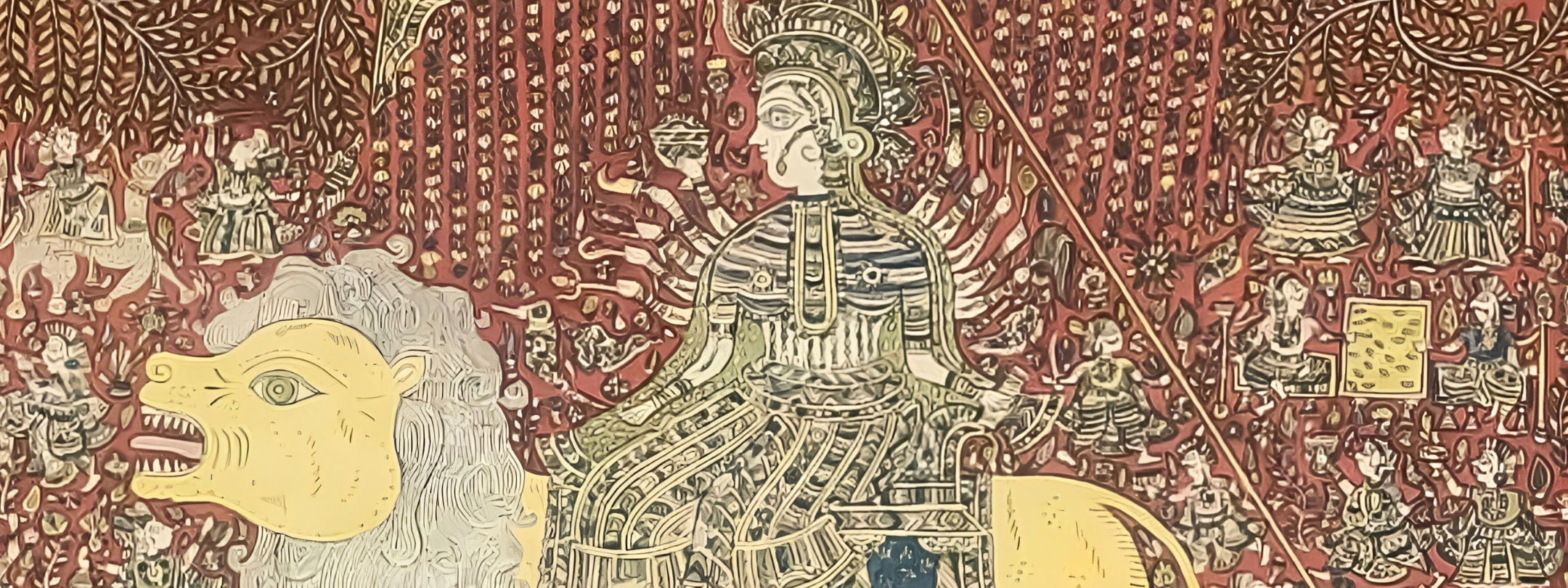Mata Ni Pachedi
Originating in the Indian state of Gujarat, Mata ni Pachedi is a traditional art form that embodies an amalgamation of religious reverence and artistic expression. ‘Mata ni Pachedi’ means "behind the goddess" in Gujarati, referencing its historical role as a temple backdrop. This art form is deeply rooted in the Bhakti movement and Jain culture, tracing its beginnings to the late 17th century. Originally, Mata ni Pachedi served as a religious textile used to depict the goddess Devi, often Durga or Amba, within the sanctified spaces of temples or during festive processions. The art form's dual nature of being both a form of worship and a visually captivating craft lends it a distinctive significance.
Mata ni Pachedi is characterized by its distinctive form and style. It typically consists of large rectangular pieces of cloth, traditionally dyed in deep red or maroon, obtained from natural sources like alum and rust. The artisan employs intricate hand-block printing techniques to adorn the cloth with vivid and meticulously detailed depictions of the chosen deity, surrounded by elements of flora, fauna, and mythological narratives. The compositions are rendered in a style that blends the traditional and the folk, characterized by bold outlines, vivid colors, and a rhythmic repetition of motifs. The intricate details and harmonious color schemes reflect the spiritual and cultural significance of the art form, encapsulating the essence of devotion and storytelling within a textile canvas.

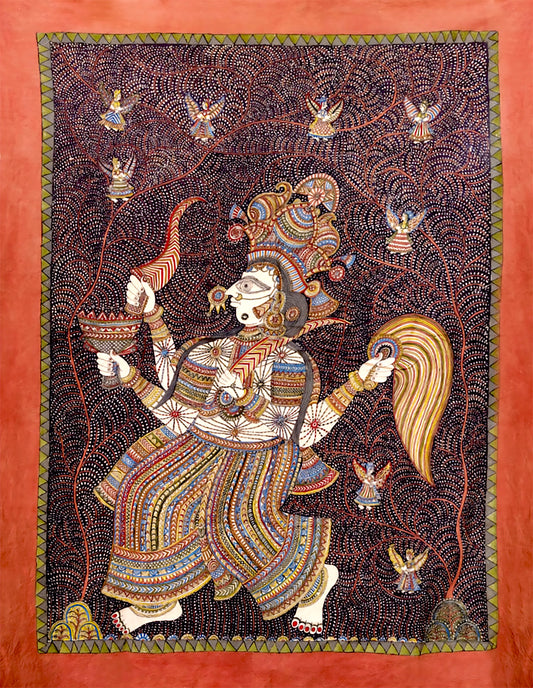
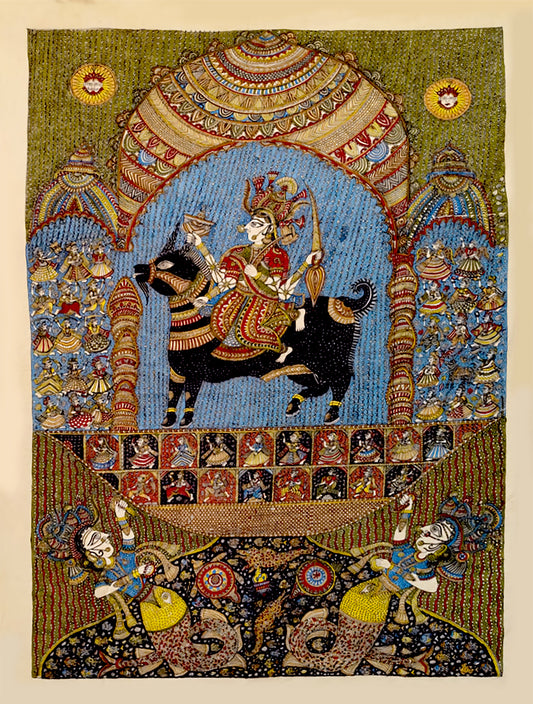

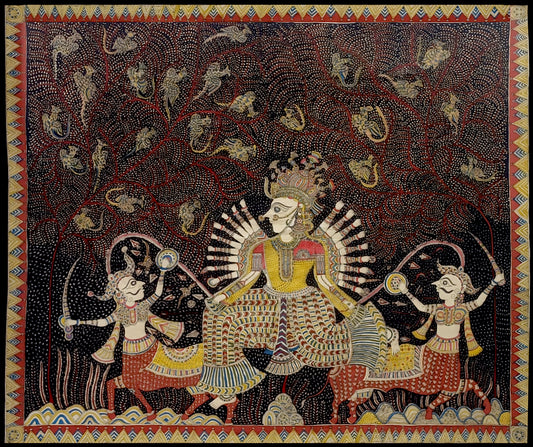
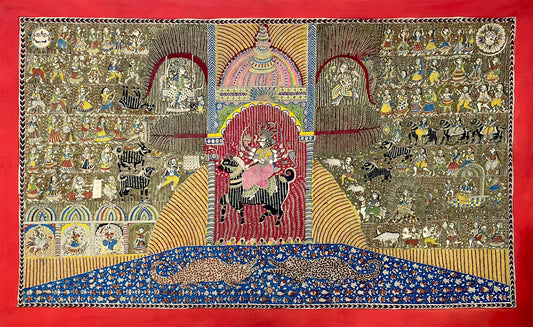
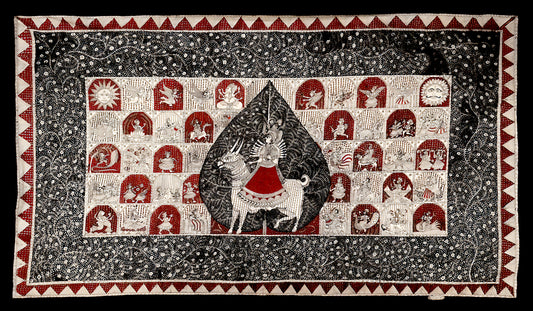
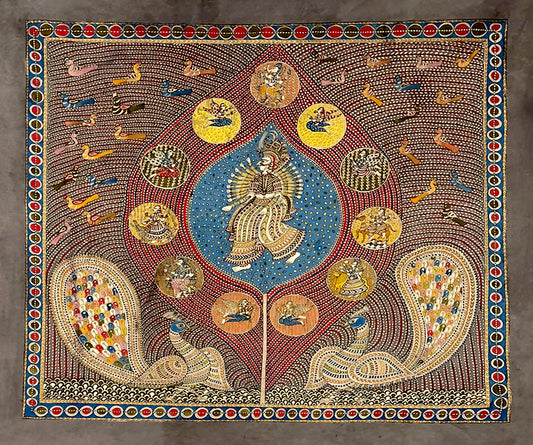
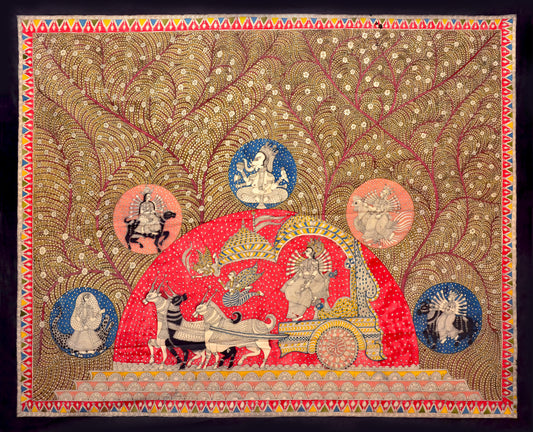
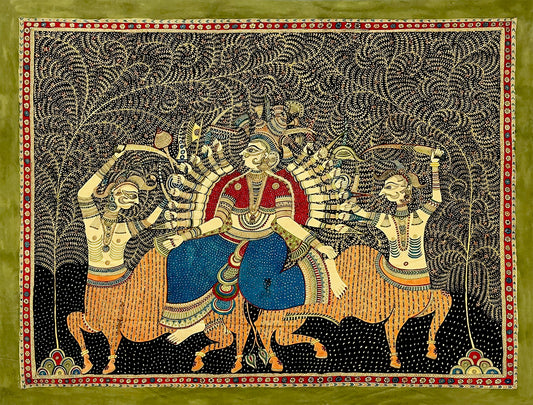
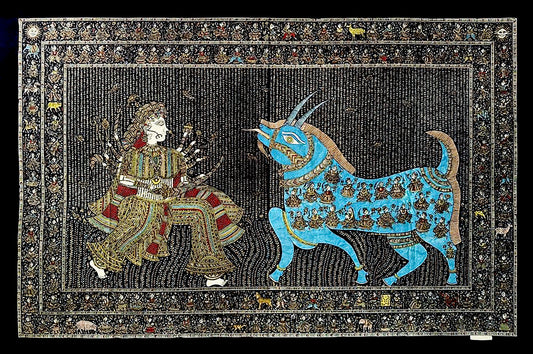
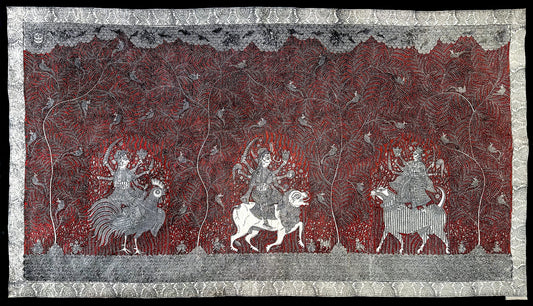
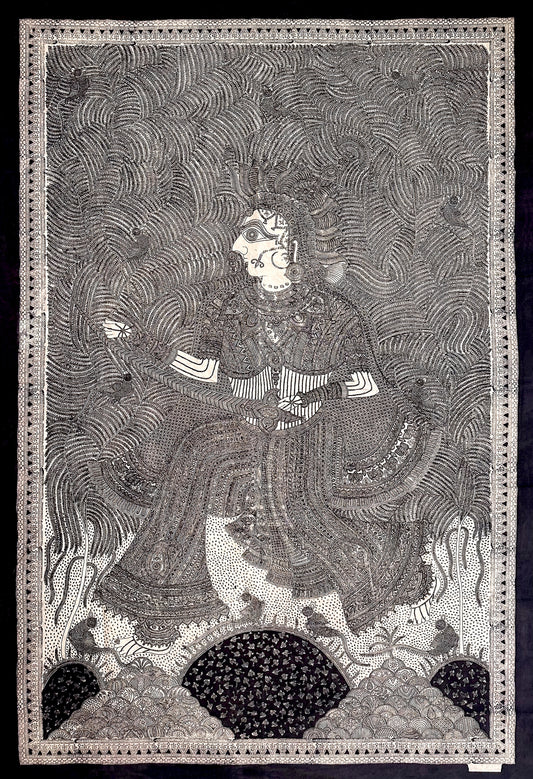 Sold out
Sold out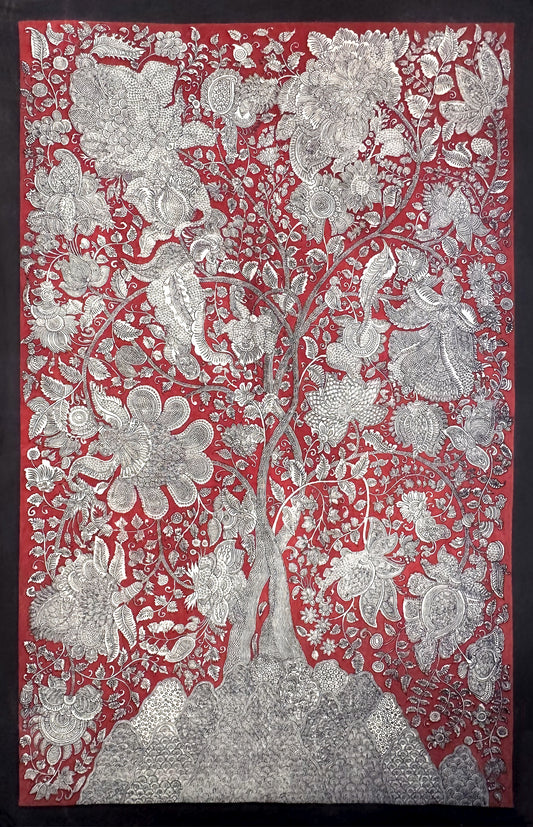
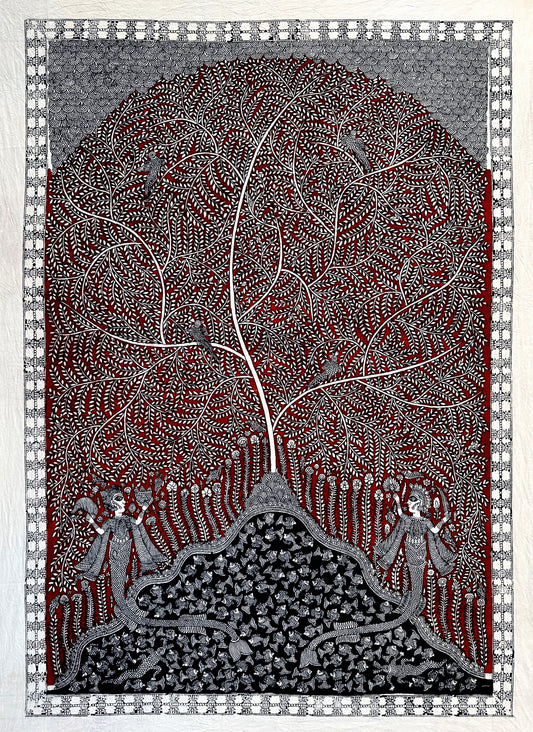
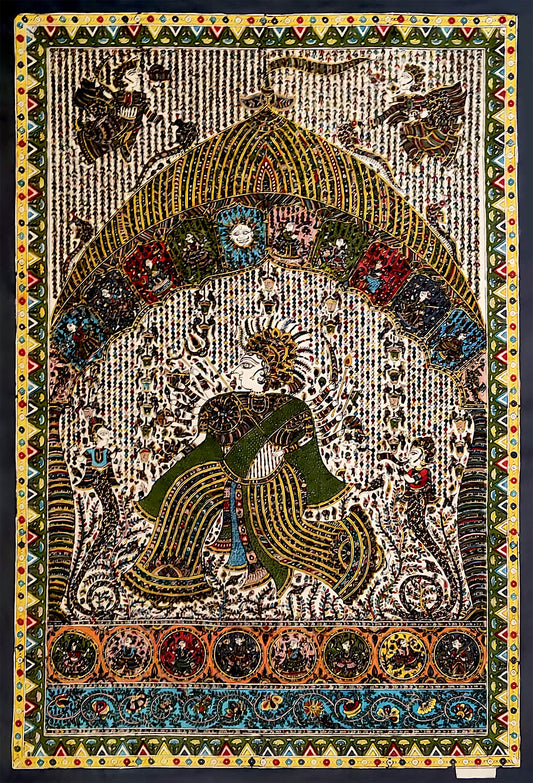
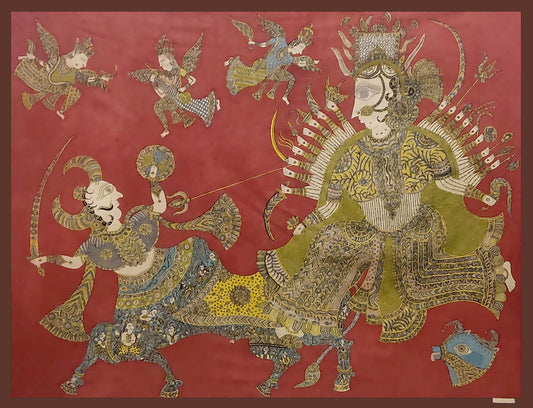


.png?v=180585433461421961291732270581)
